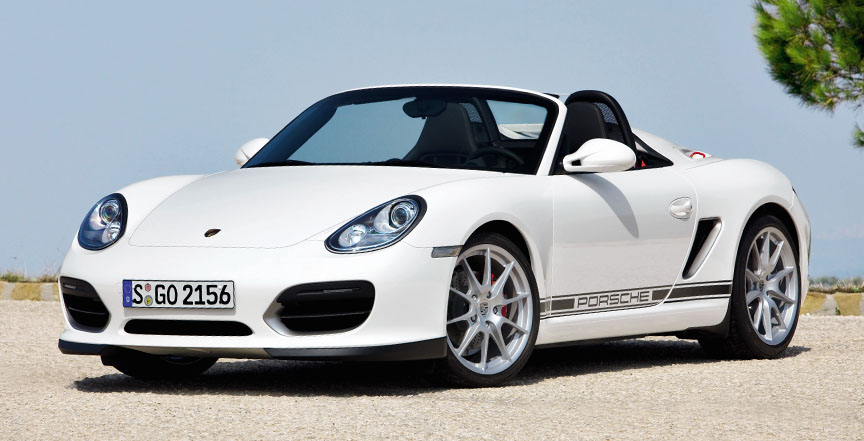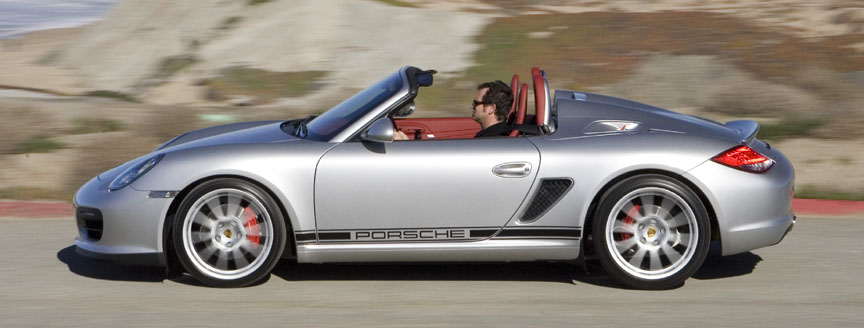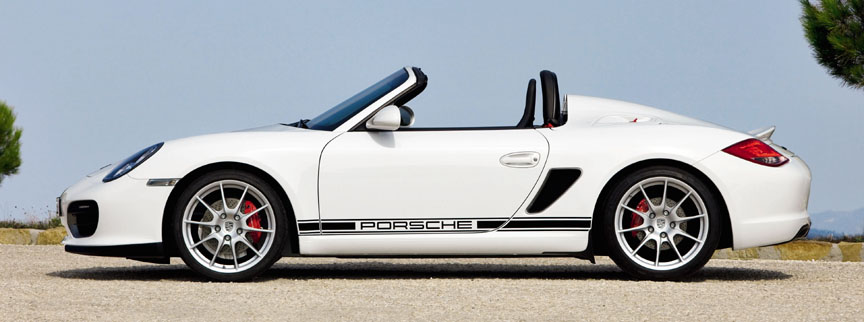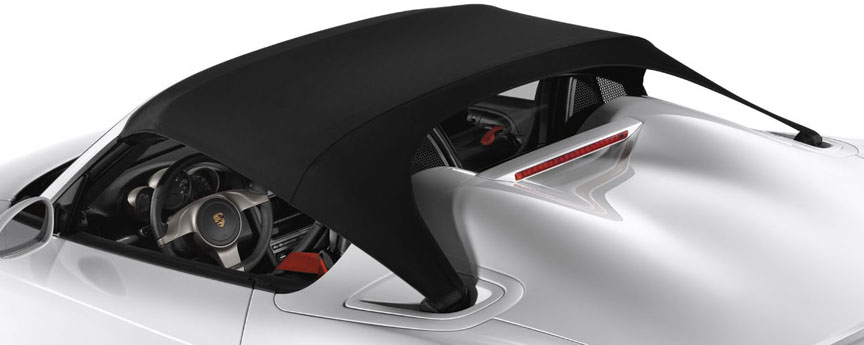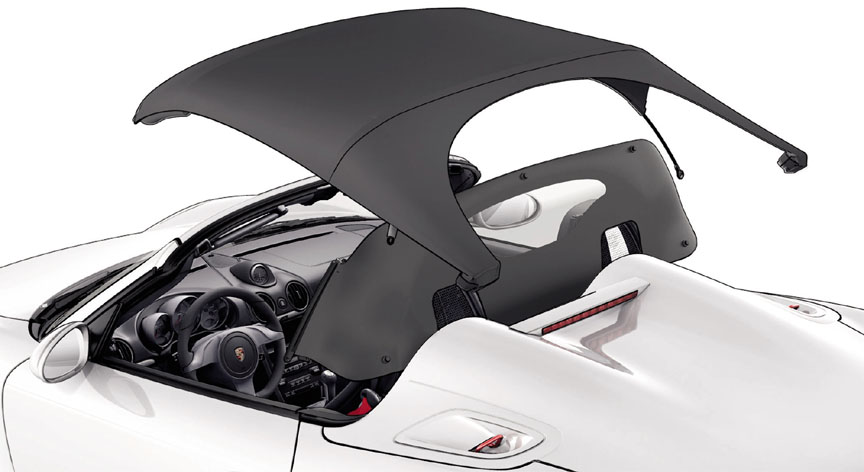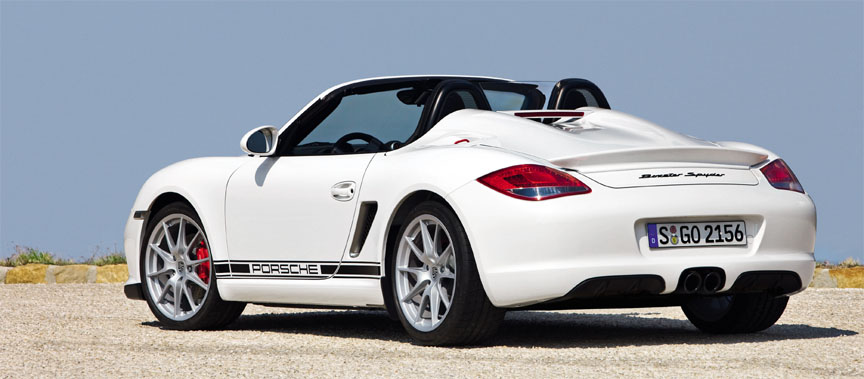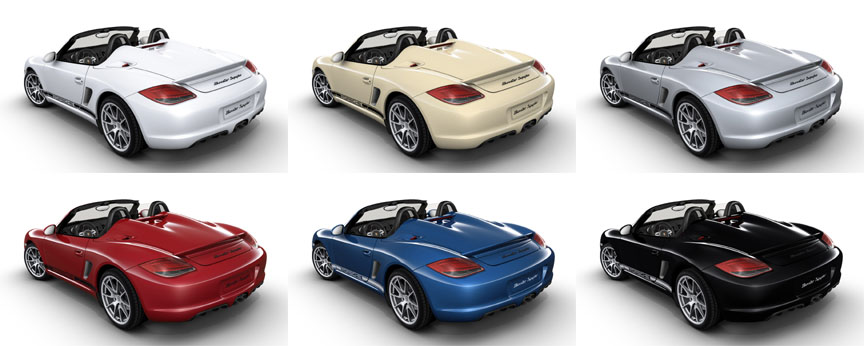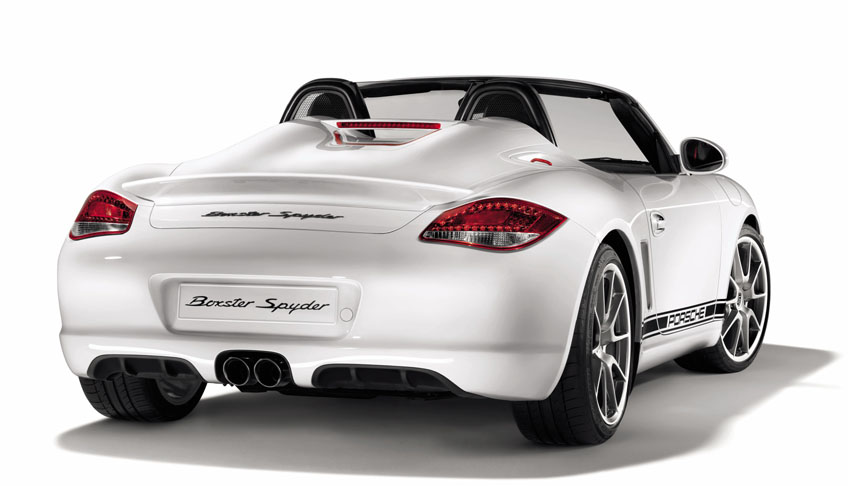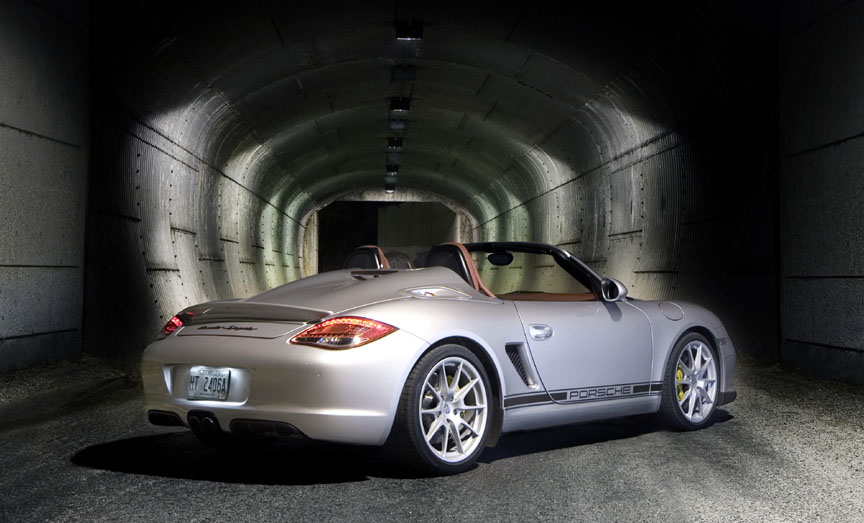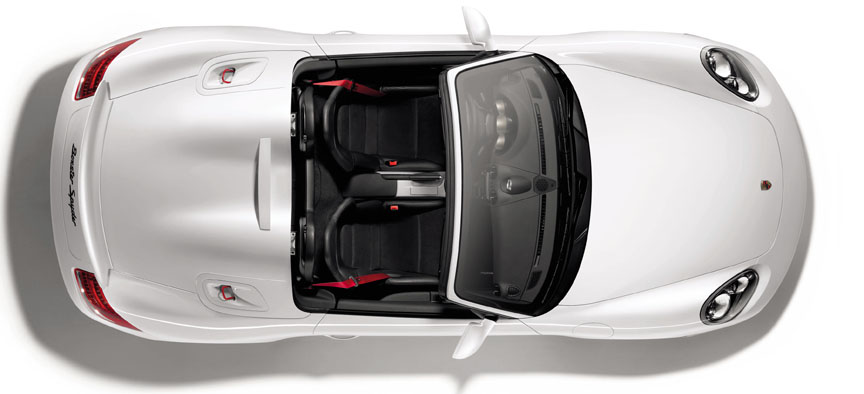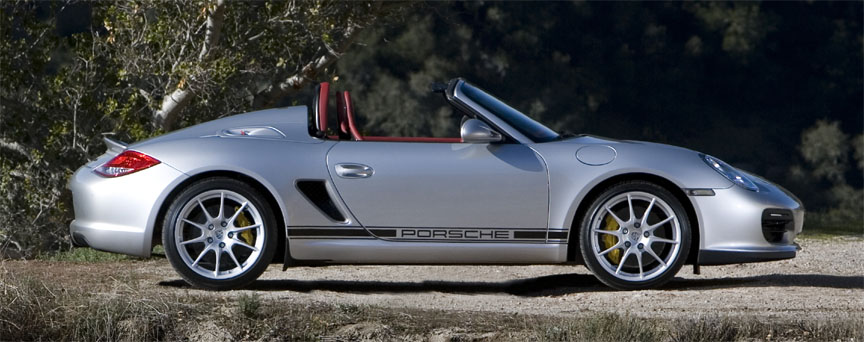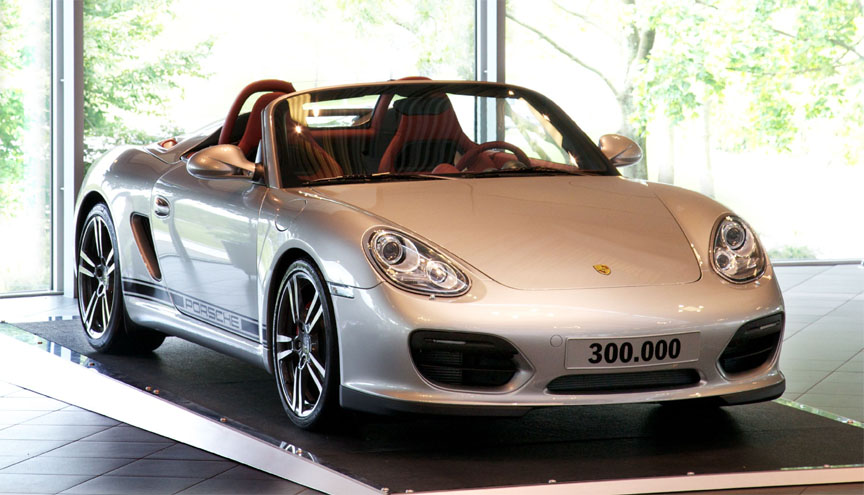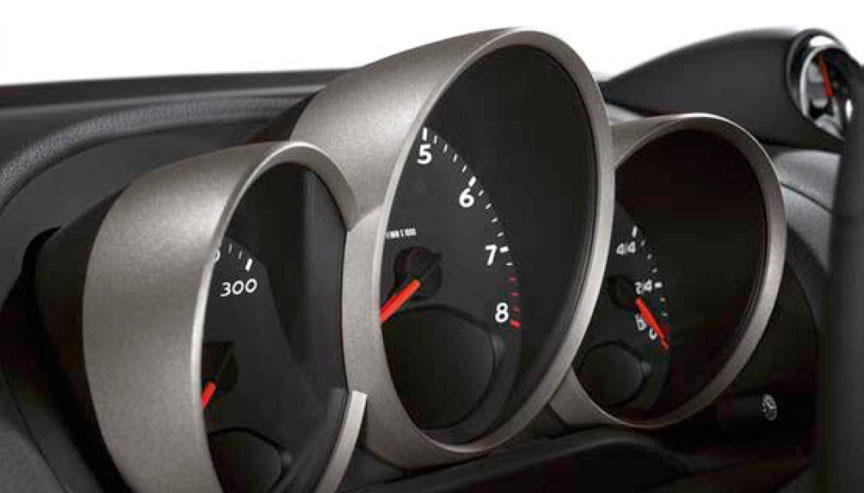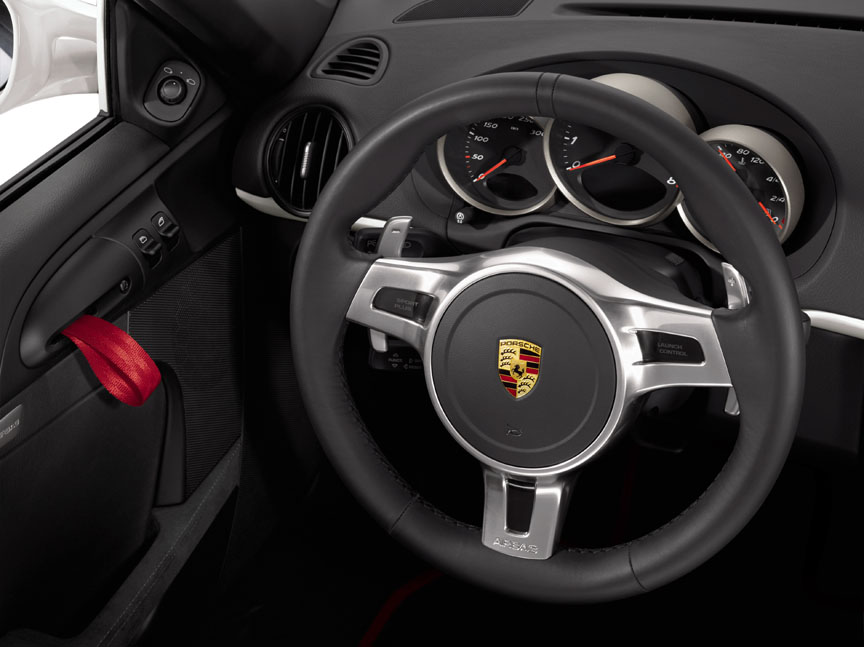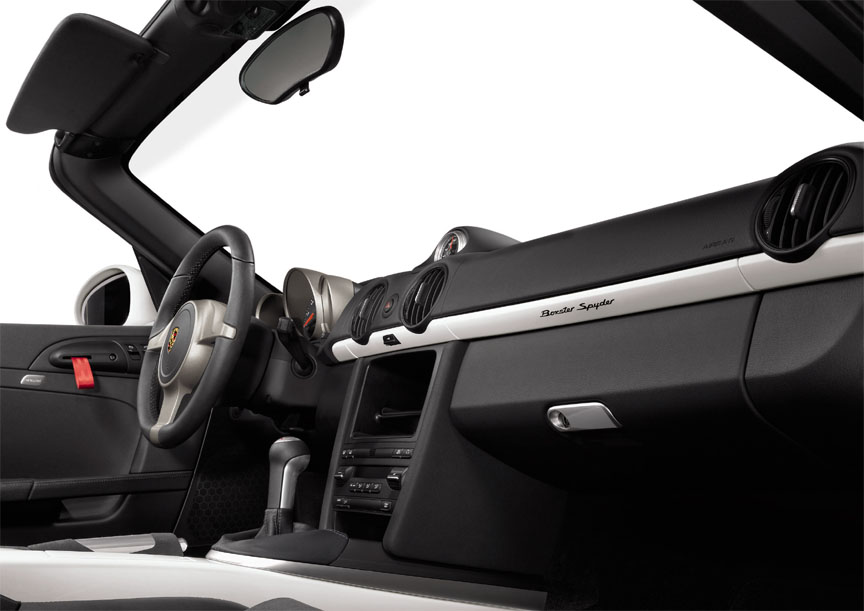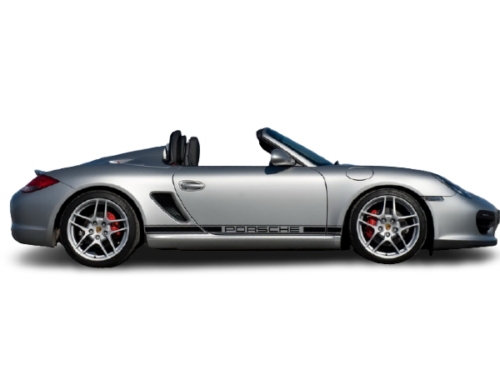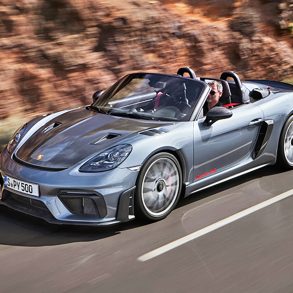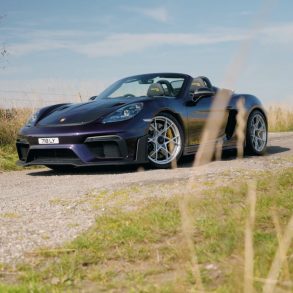(2011 – 2012) Porsche Boxster Spyder (987) – Ultimate Guide
Date of unveil by Porsche AG: 2009 November 5 / Premiere: 2009 December 2 at Los Angeles Motor Show / World market launch: 2010 February (as a 2011 model)
Press Release
Stuttgart. Dr. Ing. h.c. F. Porsche AG, Stuttgart, is introducing a new top version of the Porsche Boxster, a light mid-engined roadster making its world debut at the Los Angeles Motor Show in December.
Weighing just 1,275 kg or 2,811 lb, the Boxster Spyder is the lightest model throughout the entire range of Porsche cars. Clearly recognisable right from the start, this new mid-engined roadster represents the true, purist form of the Porsche sports car – light, powerful, consistently open, and very efficient. This is precisely the formula already applied in creating Porsche’s most successful road-going sports and racing cars, ranging from the legendary 550 Spyder all the way to the RS Spyder so successful in motorsport today.
The Boxster Spyder now continues this clear-cut philosophy with full homologation for the road, thus reflecting a common wish expressed by Porsche customers. The new model is entering the market in February 2010 as the third version in the Boxster range, joining the Boxster and Boxster S.
The new member of the Boxster family stands out clearly at very first sight from the other versions of Porsche’s mid-engined roadster. Quite simply because the Boxster Spyder has been developed first and foremost for driving in the open air, the low-slung, light soft top extending far to the rear serving exclusively to protect the driver and passenger from bright sunshine, wind and weather. When closed, the soft top, together with the extra-low side windows and the two striking bulges on the single-piece rear lid, boasts a stretched and sleek silhouette reminiscent of the Carrera GT.
Significantly less weight than the Boxster S, a lower centre of gravity and an all-new sports suspension give the Boxster Spyder the right kind of driving dynamics clearly reflecting the unique look of the car.
The Boxster Spyder features a 3.4-litre six-cylinder with Direct Fuel Injection upfront of the rear axle. Maximum output is 320 bhp, 10 bhp more than in the Boxster S.
Equipped with PDK Porsche-Doppelkupplungsgetriebe and the Sports Chrono Package, the new Spyder, using Launch Control, accelerates from a standstill to 100 km/h in 4.8 seconds. Again with optional PDK, fuel consumption is a mere 9.3 litres on 100 kilometres (equal to 30.4 mpg imp) in the NEDC New European Driving Cycle. Top speed, in turn, is 267 km/h or 166 mph – with the roof open. In terms of its fundamental concept, the entire Boxster family is the successor to the legendary 550 Spyder built back in 1953, both models sharing the same mid-engine roadster concept, low weight, back-to-the-roots lifestyle, and supreme agility combined with equally outstanding driving pleasure.
The 550 Spyder was the first sports car from Stuttgart-Zuffenhausen developed specifically for racing but also homologated for the road. In the years following its production, this unique Spyder weighing only 550 kg or 1,213 lb, scored numerous victories on race circuits and in the road races so popular at the time. The 550 Spyder was followed by other extremely successful Porsche Spyders such as the 718 RS 60 in 1960.
In 2004 and 2008 Porsche dedicated a limited edition of special Boxsters bearing the additional name Spyder to these legendary racing cars. By contrast, the new Boxster Spyder is a regular, specially developed and upgraded production model with far-reaching modifications versus the Boxster and Boxster S. Market introduction of the new Porsche Boxster Spyder will start worldwide in February 2010. The base price in the Euro countries is 53,100 Euro. Including 19 per cent VAT and national specifications, the market price of the new Porsche Boxster Spyder is 63,404 Euro.
The Spyder’s most striking feature, the manual canvas hood in place of an electric convertible top saved 21 kg/46 lb. Weighing 1275 kg/2811 lb, the Boxster Spyder was the lightest street legal Porsche in decades (lightest after the eighties 944). Although technically rather similar to the Boxster S, the Spyder got an all-new 0.8″/20 mm lower sports suspension. Together with the weight reduction measures, the center of gravity was lowered by 1.0″/25 mm. The sporty chassis was characterized by its stiff and short springs, large anti-roll bars on the front and rear axles, and specially tuned tension and pressure stages of its four shock absorbers. Mechanical rear differential lock came as standard. As part of the lightweight construction, the 8.5+10 x 19” unique and weight-optimized wheels were developed. The 19″ Spyder wheels were around 10% lighter than optional 19″ wheels on the Boxster S and even a bit lighter than the 18″ wheels on the Boxster S.
Options included Boxster Spyder Alcantara interior, lightweight lithium ion battery (-10 kg/22 lb), automatic climate control (+12 kg/26 lb), radio and speakers (+3 kg/7 lb), sports exhaust system (it wasn’t standard item) and other selected Boxster options. As the Spyder was designed to be as minimalistic as a Boxster could be, Porsche’s official saying was: “The two luggage compartments are perhaps the only concession to convenience.”

